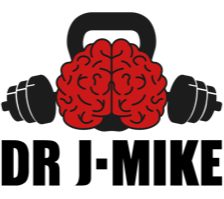Mind-muscle connection: for maximum power on muscle growth

The mind-muscle connection is known as an “internal focus of attention.” Specifically, it’s the process of actively thinking about the target muscle during training and feeling it work throughout the full range of motion.
Based on this strategy, it has the likelihood of maximal stimulation of the muscles you’re trying to target in a given exercise while decreasing the involvement of any accessory or other prime movers. According to this concept, this combination hypothetically should result in higher muscle growth. While numerous studies exist on attentional focus for performance-oriented tasks, research into the use of attentional focus during resistance training is still quite scarce.
A wealth of studies have confirmed that a mind-muscle connection does increase activation of the target muscle from measurement of EMG, or electromyography. However, it is noteworthy to mention that higher activation of a muscle doesn’t necessarily equate to greater muscle hypertrophy over the long-term with respect to enhanced adaptations as it related to training programs.
A recent study by Schoenfeld (2018) examined the differential effects of attentional focus strategies during long-term resistance training. Thirty college-aged men agreed to participate in the study and were randomly assigned to either train with an internal focus (mind-muscle connection) or an external focus. All participants performed 4 sets of arm curls and leg extensions for 8 to 12 RM on 3 non-consecutive days per week, with sets carried out to muscular failure. Every rep of every set was supervised by a strength and conditioning professional. The mind-muscle group was instructed to “squeeze the muscle” on each rep while the external focus group was instructed to “get the weight up.” This training intervention lasted eight weeks with a familiarization period tasking place a week prior to the actual training bouts.
One interesting aspect about this particular study was the subjects were actually untrained. The rationale for choosing untrained individuals was that trained persons gravitate towards a specific attentional focus. This creates habitual patterns in the brain that become difficult for individuals to change their specific focus during actual training, which will likely affect the outcome of the study.
Therefore, untrained subjects were used in order for the intervention to have a better attentional focus strategy. Furthermore, they used single joint exercises for the study, as they represent an easier time for subjects to focus more on a given muscle group vs. multi-joint exercises like squats or presses. These require an additional learning curve or enhanced coordination, which is likely to affect the outcome of the study and reduce the overall effect of the mind-muscle connection and potential adaptations.
The results showed that after eight weeks of consistent training, subjects who used a mind-muscle condition had almost double the muscle growth in the biceps compared to those using an external focus (12.4% vs. 6.9%) although muscle growth for the quadriceps was similar between conditions. From a maximal strength perspective, isometric strength of the elbow flexors increased significantly more for the internal focus group while knee extensor strength was greater for the external focus group.
The main interesting finding of the study was that superior gains in biceps hypertrophy were made by utilizing an internal focus of attention, which closely matches the old school thought process that mind-muscle connection can enhance growth. An interesting question is how come attentional focus did not seem to matter for leg hypertrophy?
While numerous factors are involved and mechanisms of actions, it’s likely that subjects found it easier to focus on the biceps as opposed to the quads. This is a valid argument as upper body employs more fine motor skills vs. the lower body that employs more global or gross motor patterns. Specifically, trainees and general populations are more conscious of their arm muscles vs. leg musculature. The arguments could also be made that trained individuals would yield a better focus for the quads and larger muscle mass exercises to potentially achieve better hypertrophy.
If your goal to maximize growth and hypertrophy, focus on the muscle being trained and visualize it working throughout the full range of motion. Let’s be clear, this strategy is mainly used with moderate reps, not heavier loading patterns. If completed with heavier loads, this will likely reduce and create a disadvantaged and shift away from muscle hypertrophy and attentional focus to just “getting the weight up.” Nonetheless, this is one of many strategies to employ muscle hypertrophy and future research should look to compare internal versus external focus using multi-joint exercises in trained lifters in order to gain a better and deeper understanding of the effects of mind-muscle connection to training and its impact on muscle growth.
References
3). Calatayud, J., Vinstrup, J., Jakobsen, M. D., Sundstrup, E.,Brandt, M., Jay, K.,…Andersen, L. L. (2016). Importance of mind-muscle connection during progressive resistance training. European Journal of Applied Physiology, 116(3), 527–533.
4). Marchant, D. C., & Greig, M. (2017). Attentional focusing instructions influence quadriceps activity characteristics but not force production during isokinetic knee extensions. Human Movement Science, 52, 67–73.





